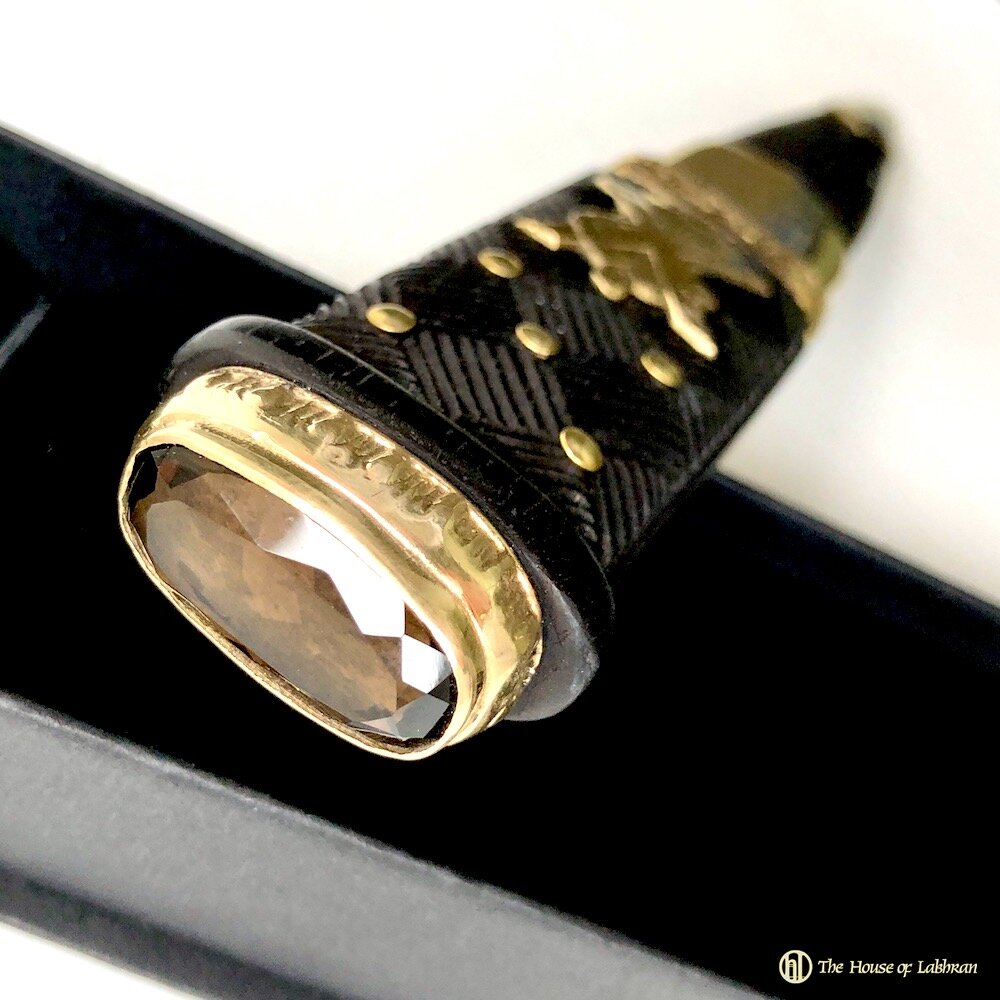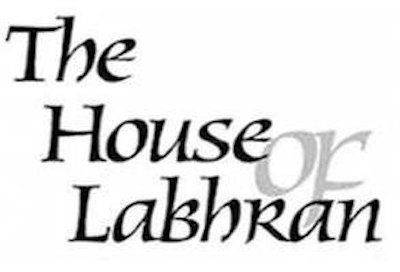Black Watch Royal Highlanders Regimental Brass Mounted Sgian Dubh





Black Watch Royal Highlanders Regimental Brass Mounted Sgian Dubh
Black Watch Royal Highlanders regimental brass mounted sgian dubh
Hand made by the regimental silversmith, with solid brass St Andrew ( wee Jimmy ) and thistle mounts and stone set with a smoky quartz cairngorm.
Hand carved studded African black wood hilt
Sheffield stainless steel blade
Hand carved wooden scabbard covered in Moroccan leather and mounted with solid brass mounts
Made in Scotland - Approx 6 weeks
All buyers must be over 18 years of age - UK Legal to carry when worn with Highland Dress.
The Black Watch Regiment
In the aftermath of the First Jacobite Rebellion of 1715, Independent Companies of militia were raised from loyalist Highland clans for policing and peacekeeping duties. These companies were commonly known in Gaelic as ‘Am Freiceadan Dubh’, or ‘The Black Watch’, due to their unpopular nature and their dark green government-issue tartan.
The regiment impressed the Duke of Cumberland with its Highland style of fighting at Fontenoy in 1745 and later that year it was sent back to guard southern England against invasion, with one company being sent north to fight the Jacobites at Culloden. In 1747 it was given a numerical ranking as the 43rd Foot, rising to the 42nd two years later when the previous 42nd was disbanded.
The 42nd (Royal Highland) Regiment fought in the French and Indian Wars in North America before defeating George Washington at the Battle of Long Island in 1776 during the American War of Independence (1775-83). It served in both Egypt and Spain during the Napoleonic Wars and was mentioned in despatches for its service at Quatre Bras and Waterloo (1815).
The 19th century saw it fighting in the Crimea (1854-56) and the Indian Mutiny (1857-59), whilst in 1881 the 73rd (Perthshire) Regiment was merged into it. From then on it was officially known as The Black Watch and was the county regiment of Fifeshire, Forfarshire and Perthshire. The regiment was created as part of the Childers Reforms in 1881, when the 42nd Regiment of Foot was amalgamated with the 73rd Regiment of Foot. The regiment then fought in Egypt (1882) and in the Boer War (1899-1902).
Today the Black Watch, 3rd Battalion, Royal Regiment of Scotland is an infantry battalion of the Royal Regiment of Scotland.
Our range of fine hallmarked sterling silver skean dubh’s and dirks made by the Regimental silversmith and Royal silversmiths Hamilton & Inches in Edinburgh and our regimental silversmith in Scotland. We can engrave many of these skean dubhs for presentation gifts. Many of these skean dubhs complement the silver buckles, kilt pins and Scottish silver buttons we have available from our highland jewellery page.
The Black Watch Royal Highlanders
The Black Watch was raised in the wake of the 1715 Jacobite rebellion, when companies of trustworthy Highlanders were drawn from loyal clans comprising Campbells, Grants, Frasers and Munros. Six companies were then formed in 1725 and stationed in small detachments across the Highlands to prevent fighting between clans, to deter raiding and to help enforce laws against the carrying of weapons. In 1739 King George II authorised the raising of four additional companies to be formed into a "Regiment of the Line" of the regular army, with the Earl of Crawford as Colonel. The first mustering of the new Black Watch regiment took place near Aberfeldy the following year. The Black Watch name was derived from the dark colour of the tartan and the original role of the regiment to "watch" over the Highlands. In 1743 the regiment was ordered to march to London for inspection by the King. Due to a rumour that they were to be forced to serve in the West Indies rather than service in Scotland for which they had been enlisted, many of the men mutinied and decided to return home. Over a hundred were captured and returned to London, where they were tried by court martial and three of the leaders were condemned to be shot in the Tower. The remainder of the regiment proceeded to Flanders for action against the French. It remains for speculation whether the 1746 Rebellion could ever have taken place had the Black Watch been left to fulfil its original role of policing the Highlands.
Between 1745 and 1800 the Black Watch saw action in Fontenoy, the French-Indian War at Ticonderoga, Guadaloupe, Martinique, Havanna and the American War of Independence. The next 15 years saw action against the French in Egypt, the Peninsular War in Spain and Portugal and Napoleon's Waterloo campaign. During the later 1800s the regiment saw service in the Crimean War, the Indian Mutiny, conflicts in Africa and the Boer Wars. At the start of the 1st World War in 1914 there were 7 Black Watch Battalions and the regiment saw action in Mons, the Western Front, Mesopotamia and Palestine. During the 2nd World War the regiment saw action in Palestine, Somaliland, France, North Africa, Italy, North West Europe and Burma.
More recently the Black Watch served in Palestine, Hong Kong, Korea, Kenya, Northern Ireland, the Balkans and Iraq.
In recent years the Pipes and Drums of the Black Watch have carried out 11 tours in North America on behalf of Columbia Artists, some accompanied by the regiment's Military Band. A significant milestone in the history of the Black Watch Pipe Band was when 9 pipers from the Band played at the State Funeral of President John F Kennedy of the USA in November 1963, reflecting the impact which the Pipe Band had made in an earlier tour of the USA.
The regimental tunes are the quick march "Hielan Laddie" and the slow airs "My Home" and "Highland Cradle Song". Since 2006 the Black Watch regiment has been known as 3 SCOTS The Black Watch as part of the Royal Regiment of Scotland
Sgian Dubh’s
We have a passion for fine antique and collectible sgian dubh’s and Highland dirks. We source antique Jacobite styles of the 18th century, high Victorian styles and regimental patterns of WW1 – WW2. Our sgian dubh and dirk range make wonderful addition to any Highland dress collection.
Our range of fine hallmarked sterling silver skean dubh’s made by the Highland regimental silversmith and Royal silversmiths Hamilton & Inches in Edinburgh, Scotland. We can engrave many of these skean dubhs for presentation gifts.
Vintage antique Sgian Dubhs – Scottish sgian skean dubhs from Scotland – The Gaelic sgian dubh meaning “black knife”, where “black” may refer to the usual colour of the handle of the knife. It is also suggested that “black” means secret, or hidden, as in the word blackmail. This is based on the stories and theories surrounding the knife’s origin and the meaning of “Dubh” in Gaelic, in particular those associated with the Highland custom of depositing weapons at the entrance to a house prior to entering as a guest. Despite this practice, a small twin edged-dagger, (‘Mattucashlass’), concealed under the armpit, combined with a smaller knife, (‘Sgian dubh’).
